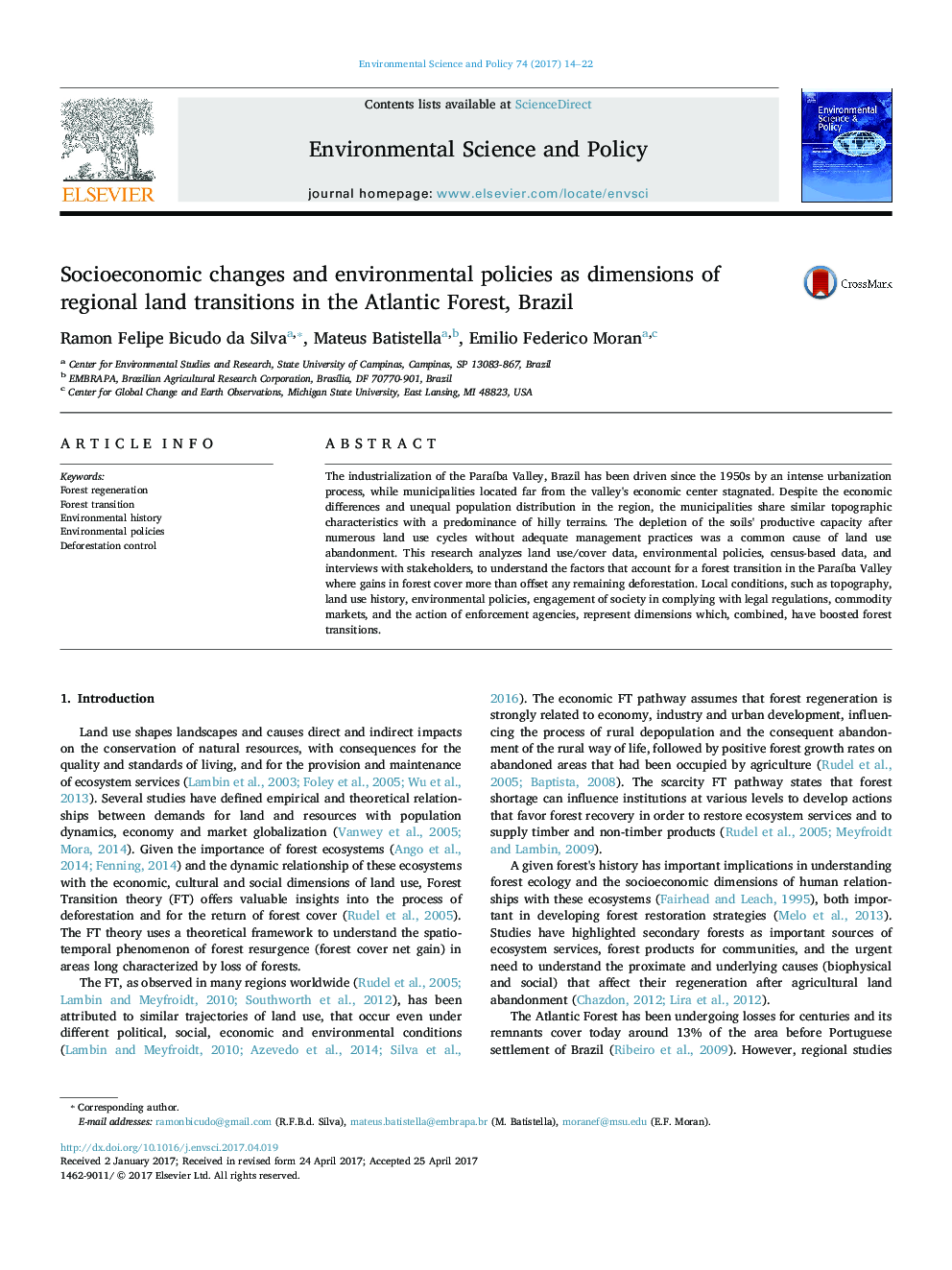| Article ID | Journal | Published Year | Pages | File Type |
|---|---|---|---|---|
| 5115819 | Environmental Science & Policy | 2017 | 9 Pages |
Abstract
The industrialization of the ParaÃba Valley, Brazil has been driven since the 1950s by an intense urbanization process, while municipalities located far from the valley's economic center stagnated. Despite the economic differences and unequal population distribution in the region, the municipalities share similar topographic characteristics with a predominance of hilly terrains. The depletion of the soils' productive capacity after numerous land use cycles without adequate management practices was a common cause of land use abandonment. This research analyzes land use/cover data, environmental policies, census-based data, and interviews with stakeholders, to understand the factors that account for a forest transition in the ParaÃba Valley where gains in forest cover more than offset any remaining deforestation. Local conditions, such as topography, land use history, environmental policies, engagement of society in complying with legal regulations, commodity markets, and the action of enforcement agencies, represent dimensions which, combined, have boosted forest transitions.
Related Topics
Physical Sciences and Engineering
Energy
Renewable Energy, Sustainability and the Environment
Authors
Ramon Felipe Bicudo da Silva, Mateus Batistella, Emilio Federico Moran,
